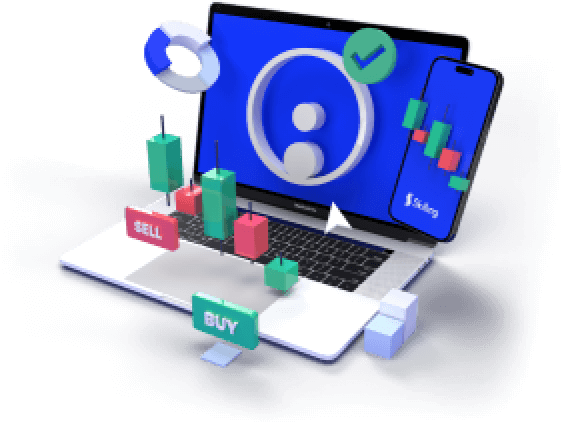The summer months are traditionally viewed as quiet periods for financial markets. Lower trading volumes, fewer corporate announcements, and slower macro developments usually characterize June and July. But in 2025, June has defied expectations — particularly across Europe’s DAX and OMX indices.
Throughout the month, intraday volatility has surged. Both the German DAX and the Nordic OMX indices have posted swings greater than 2% in single sessions. For traders, especially those using CFDs, this has triggered a reevaluation of strategies historically often built around the summer calm.
Access 1,200+ global CFDs instruments.
Access a plethora of trading opportunities across the financial markets.

Central to the disruption are interest rate dynamics. Earlier in June, the European Central Bank cut rates — a widely expected move — but market reactions signaled confusion. Mixed messages from ECB members on whether further cuts would follow left investors uncertain. This affected rate-sensitive sectors like real estate, financials, and consumer cyclicals.
Germany’s DAX, heavily weighted with exporters and industrials, responded to weak PMI data and lower-than-expected Chinese import figures. These indicators stoked concerns about a global slowdown, which rippled across manufacturing-heavy equities.
In the Nordics, OMX indices were pushed around by currency shifts. Sectors such as commercial real estate and banks saw particularly volatile price action, as traders struggled to price in risk from both local and global pressures.
Adding to this, political risk emerged unexpectedly. French President Macron’s snap election announcement introduced uncertainty into the eurozone’s core. Financial markets typically dislike political unknowns — and this development sent ripple effects across European equity and bond markets.
For CFD traders, these overlapping risk factors have created a summer landscape that resembles a typical Q4 earnings season rather than a sleepy mid-year lull. Many have turned to short-term strategies, using tighter stop-loss levels and increased use of technical indicators like Bollinger Bands, ATR, and RSI.
Another major feature of June 2025 has been volatility itself — with instruments like the VSTOXX gaining traction. Used as a proxy for European volatility, the index has seen increasing volume as institutional investors seek hedges against unpredictable movement in traditional indices.
Furthermore, ESG-related announcements have added complexity. EU-level updates on climate investment frameworks and green finance rules have led to sector-specific moves, particularly in clean energy and industrials. These kinds of macro-micro intersections are unusual for June, making this month an outlier.
Capitalise on volatility in index markets
Take a position on moving index prices. Never miss an opportunity.

Importantly, many institutional strategies have already adapted. Large funds that historically pulled back exposure during summer are now increasing activity — responding to event-driven price action rather than waiting for autumn catalysts.
Even within Scandinavian markets, idiosyncratic risks are rising. In Norway, revised GDP figures and housing data have moved the OBX. In Sweden, speculation around currency interventions has spurred moves in EUR/SEK and local bank stocks. For regional CFD traders, this reinforces the need for dynamic, cross-asset monitoring.
The conclusion
June is no longer a passive month. Whether driven by central bank ambiguity, geopolitical tension, or sector-level catalysts, summer markets now seem to demand the same level of focus as more traditionally active periods. Traders who underestimate June 2025 may find themselves on the wrong side of the trade.











